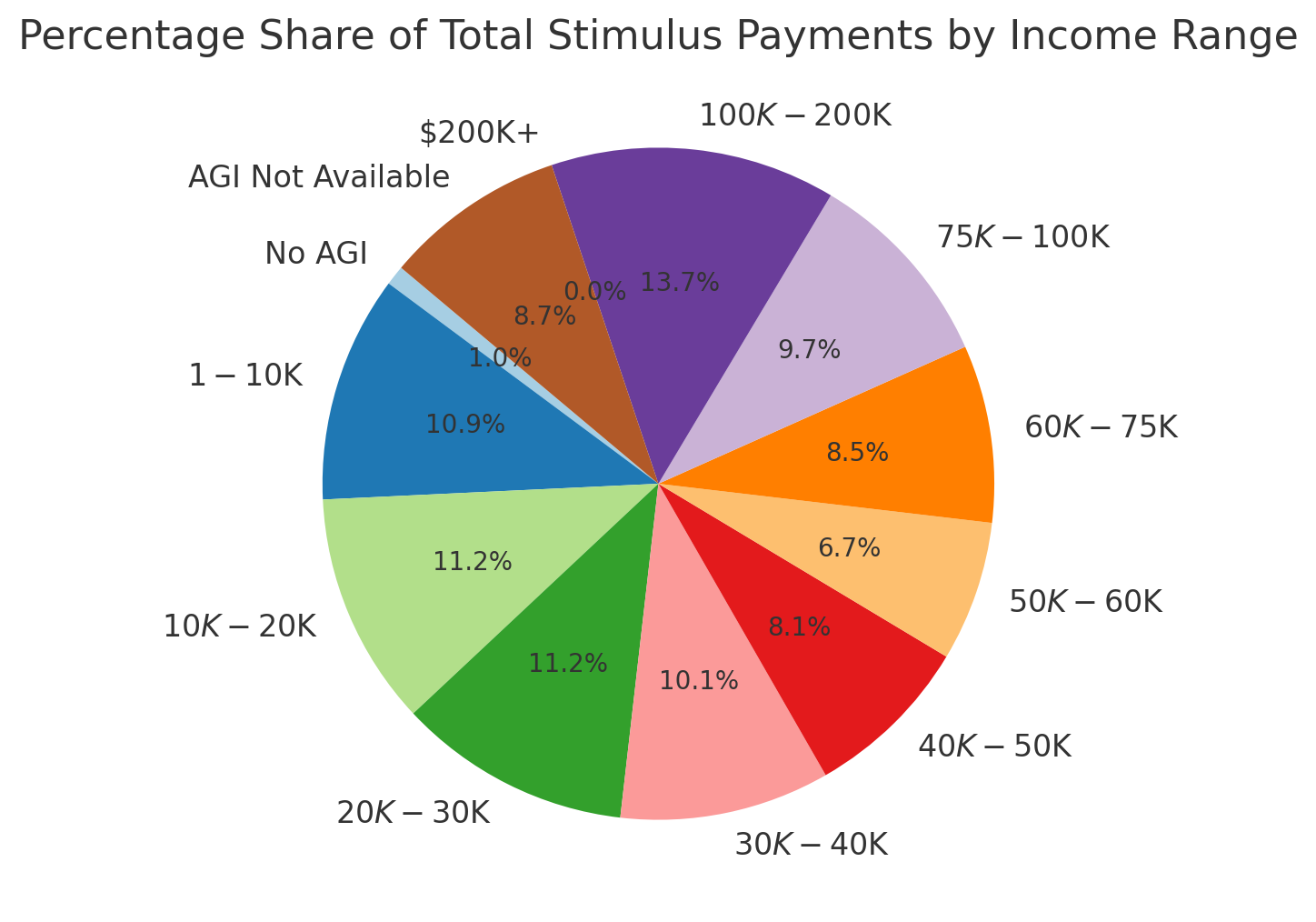The CARES Act, along with the 2020 Relief and 2021 Rescue Plan, delivered essential financial support to countless Americans through stimulus payments, which amounted to total distributions of $800 billion.

-
First Round (March 2020): More than $271 billion was allocated to roughly 162 million Americans.
-
Second Round (December 2020)(Consolidated Appropriations Act): Over $142 billion was dispersed to about 147 million Americans.
-
Third Round (March 2021)(American Rescue Plan Act of 2021) : More than $401 billion went to around 167 million Americans.
-
Stimulus Check Amount:
-
$1,200 per individual or $2,400 per married couple.
-
$500 for each dependent child under 17.
-
-
Total Distributed:
-
Number of Payments:
-
Average Payment:
-
Stimulus Check Amount:
-
$600 for individuals or $1,200 for married couples.
-
$600 for each dependent child under 17.
-
-
Total Distributed:
-
Number of Payments:
-
Average Payment:
-
Stimulus Check Amount:
-
$1,400 for individuals or $2,800 for married couples.
-
$1,400 for dependents (including adult dependents).
-
-
Total Distributed:
-
Number of Payments:
-
Average Payment:
Source:https://www.irs.gov/pub/irs-soi/21in01eip3dec.xls How Are Americans Utilizing Their Stimulus Payments?
Various surveys and research have explored how recipients have spent these funds:
-
Household Expenses: A large portion of recipients utilized their stimulus funds for essential needs. The U.S. Census Bureau indicated that the majority of adults in families receiving these payments prioritized household expenses.
census.gov
-
Debt Repayment and Savings: Several individuals directed funds toward reducing debt and building savings. The National Bureau of Economic Research noted that, on average, U.S. households used about 40% of their stimulus checks for spending, saved approximately 30%, and applied the remaining 30% to pay off debts.
nber.org
These insights imply that while stimulus payments offered immediate financial assistance for vital necessities, a significant amount was also funneled into debt reduction and savings, showcasing varying financial approaches among different income levels.
-
1. Direct Deposit:
Funds were directly deposited into the bank accounts of the eligible recipients by the IRS.
2. Paper Checks:
The IRS dispatched paper checks to recipients.
3. Prepaid Debit Cards:
To ensure swift payments and to reach individuals who lacked bank accounts, prerefund debit cards known as Economic Impact Payment (EIP) cards were issued by the IRS.
These Visa-branded cards were provided by MetaBank®, N.A., and sent in white envelopes with the U.S. Department of the Treasury seal.
The following line items were established during that time for those types of payments within the DTS (Refer to Table IV – Income tax Refunds Issued).
IRS – Advanced Child Tax Credit (Checks)
IRS – Advanced Child Tax Credit (EFT)
IRS – Economic Impact Payments (Checks)
IRS – Economic Impact Payments (EFT)
IRS Tax Refunds Business (Checks)
IRS Tax Refunds Business (EFT)
IRS Tax Refunds Individual (Checks)
IRS Tax Refunds Individual (EFT)
Please be aware that these are no longer reflected in the current version of the DTS. These values are accessible in the DTS from February 2020 to February 2023.
Within the MTS, please refer to the ‘Other’ line item underneath the Internal Revenue Service of the Department of the Treasury in Table 5 – U.S. Government Outlays.
Engin Yılmaz
https://www.crfb.org/papers/cost-trump-and-biden-covid-response-plans
https://www.covidmoneytracker.org/
